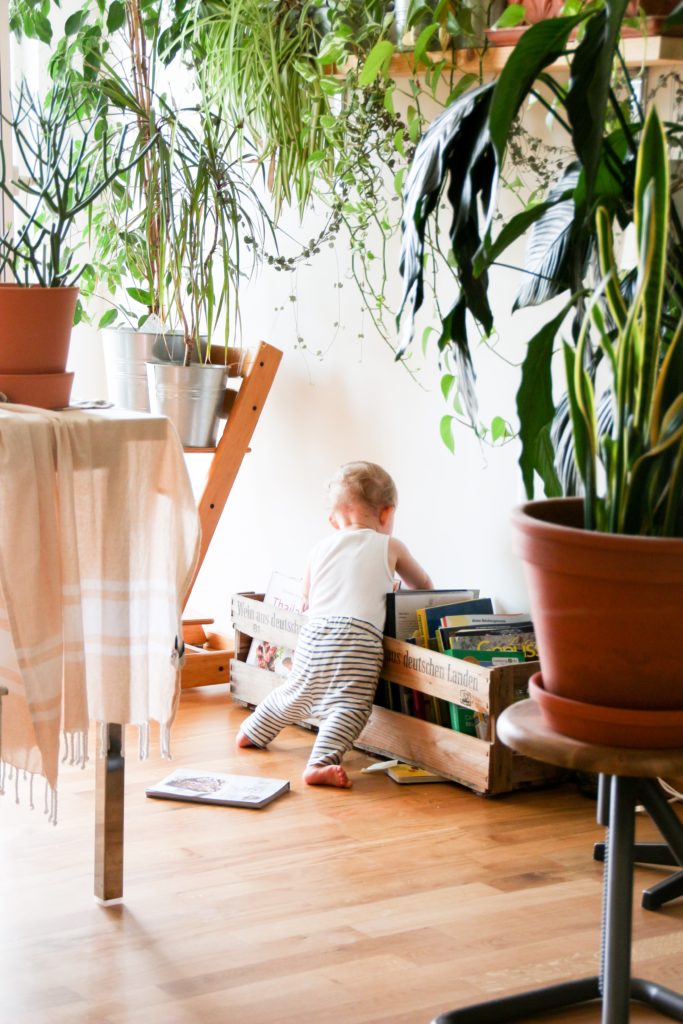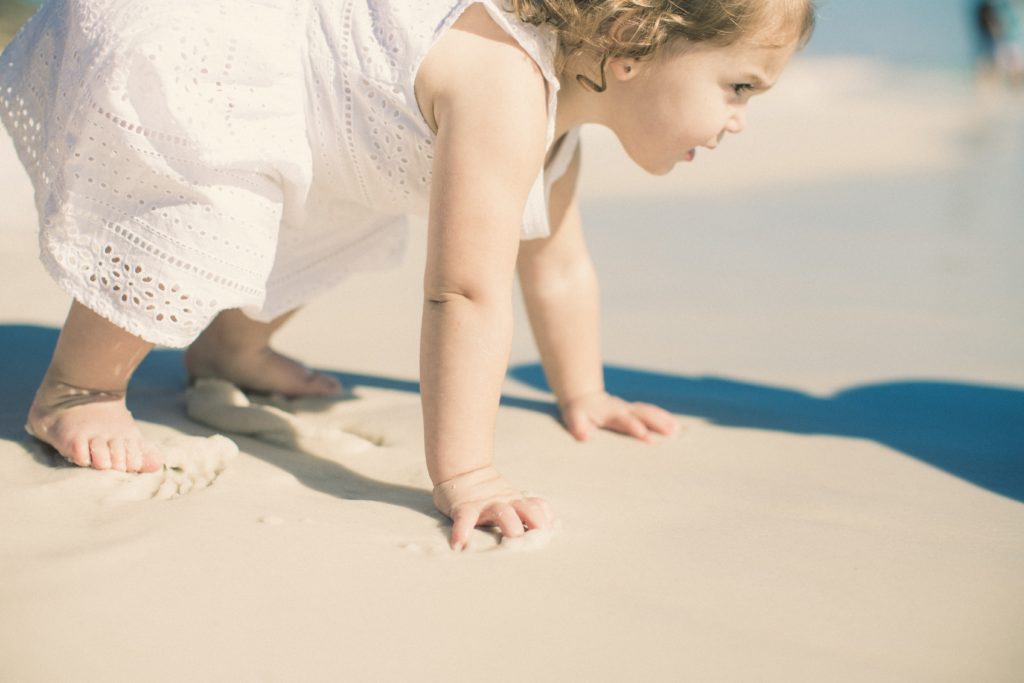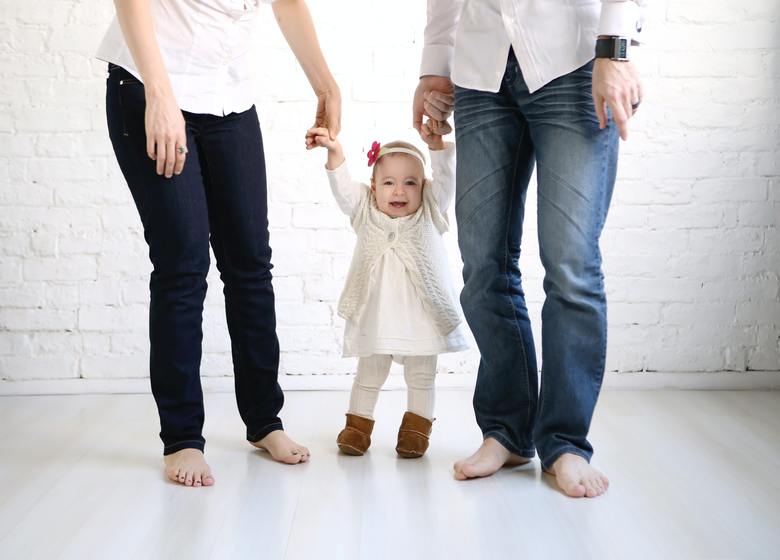Your child should have a variety of developmental milestones in their early childhood. Every cute little thing is a developmental achievement, from learning how to roll back to smiling back at you. One of the most famous of them is the moment when your child begins to stand up on their own feet and take their first steps. scroll down for the useful tips to help your baby walk.
When Baby Learn To Walk?
Most babies walk around age 10-12. Some babies may be walking even earlier, at about nine months. Others may also take up to a year and a half. This will rely on factors such as the genetics of the infant, its physical strength, and its determination.
Milestones Of Baby Walking
Your baby gains muscle strength and balance in its first year, which will help to stand up and walk. Some primary milestones or steps to walk in a baby are below.
- When a baby is standing, its legs are snapped and their little feet are pressed up against every hard surface. While their legs aren’t solid enough, they’ll keep doing this for a few months.
- At around six months of age, as your child learns to sit, crawl and roll, they’ll also start bouncing their feet every time you let them balance their legs on your thighs or on the ground.
- About nine months, with the support of furniture, it will begin to pull itself up. At this stage ensure that only sturdy items are kept around to avoid accidents.
- Your baby will learn to bend its knees and sit down from a standing position at around 9 to 10 months of age.
- Around 12 months, with a certain help or even without any assistance, they may start taking a few steps forward. They can also walk holding on to your hand, too.
- Most infants know how to walk at 12 months, although they may be a little shaky. If you haven’t been to your baby for a 12 month period, it may take a few more months and that is all right.

Tips To Help Your Baby Walk
If your baby takes longer to walk, or even if she’s on the right track, you may want to help develop muscle strength to support her walk. Below are several ways to inspire your baby to walk.
1. Exercises
You should try basic exercises to help strengthen your baby’s muscles and walk:
Cruising
Children will walk around a couch or a short bench by cruising back and forth. Stand next to the couch and let him use his other hand to balance with one hand. Little by little move back and forth and walk along with the furniture. He would probably release his hand to do the operation by himself. You can put his favorite toy on the end of the couch to walk to when he wants an incentive.
Assisted Walking
Standing behind your kid, putting your hands around his upper arms and pulling him to a standing position. Push one arm forward and the other forward gently. He instinctively leads his feet as he turns his hips step by step. Keep walking until your baby needs to stop.
Cruise and Kick
Placing a foam ball next to its feet on the floor as your child holds onto the furniture while cruising. At first, they will kick the ball unintentionally, but when you keep bringing it around their feet, it will lift one foot and kick the ball intentionally. Place the ball on either side of her leg, so that it can move their feet.

2. Games
Some games are well designed for babies when learning how to walk, and both you and your baby engage in a fun activity.
Balls in the basket
Balls or toys on the floor can be scattered and a basket available. Only ask her to pick toys, run to the basket, and drop them in. If your baby has the ability to stand up and cruise alongside a sofa, you can position the toys and the basket on either end of the sofa and enable them to play this game. This might also inspire your baby to take its initial measures.
Pass the balloon
Place your baby near a sofa or furniture and move a balloon towards it and allow them to tap it back to you when it is standing with the couch. If it isn’t completely comfortable to stand up and do this, you should let them sit down and do the same. You should tap higher on the balloon to encourage them to pull up to touch it. You can also try putting the balloon at their feet and encouraging them to kick it off. It can help improve hand-eye coordination and strengthen core muscles as well.
Wheelbarrow walk
Place your baby in a rug or a comfortable pad on their tummy. When they lie on their tummies, they pick them up by their trunk and its legs and holds them up, while they move their hands slowly and carefully.
Safety Tips
As your baby learns to walk, you need to be cautious and make the right choices to support their growth. Here are a few ideas you can bear in mind.
- Do not take a walker. Walks are not required and may even discourage your baby from learning how to walk properly as their hips and torso are still held tightly. These can also be unsafe and cause infant accidents.
- You can use the jumpers for your baby within a limit. They do come with their potential risks through better than walkers, particularly if the baby is not monitored. Overuse of jumpers can also lead the baby not to know how to build the motor skills that are required for walking.
- When your baby starts walking and standing with help, you’ll need to clear out any objects that could be fragile and can easily fall and damage the baby. Even smooth out sharp edges, or absolutely put them away.
So, these are some useful tips to help your baby walk.
Repeat is the secret to helping your baby learn how to walk. Therefore, completing those games and exercises several times in a day is safest. It’s also recommended that the kid learn how to walk barefoot in order to develop a proper balance. If your baby’s not walking even after 18 months, you can consult a doctor to rule out any delays in progress.
Also Read: Toe Walking In Children: Cause, Treatment













